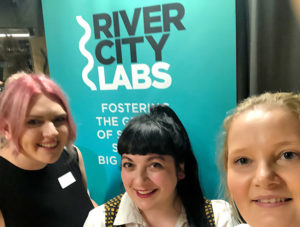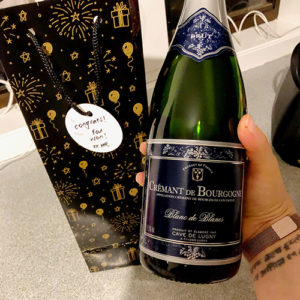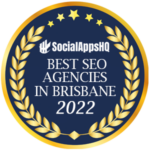Last night I went to a Hard Refresh event in Brisbane titled ‘Memorable Marketing: The Power of Pop Culture’. It was my first time attending a Hard Refresh event and I was definitely impressed. It was an interesting discussion around the way that brands successfully (and unsuccessfully) leverage pop cultural references to engage with their audiences. The format of the event was great, it was a very 2-way conversation between the panelist of experts and the audience.
 I loved the discussion around the fact that the average person scrolls through 90m of content per day on social media – of the hundreds to thousands of brand posts we see, only about 5 or 6 draw our attention long enough to be remembered, and of those 5 or 6 we only engage with 2. Using pop culture, memes and current trending topics can help brands break the scroll and grab user’s attention. The goal of content marketing is to be that 2 in one thousand.
I loved the discussion around the fact that the average person scrolls through 90m of content per day on social media – of the hundreds to thousands of brand posts we see, only about 5 or 6 draw our attention long enough to be remembered, and of those 5 or 6 we only engage with 2. Using pop culture, memes and current trending topics can help brands break the scroll and grab user’s attention. The goal of content marketing is to be that 2 in one thousand.
Using pop culture in our content marketing is not about getting more sales – although there were some great examples of ways that leveraging pop culture in content marketing did lead to a noticeable increase in sales – it is about brand awareness and ‘being top of mind’. Holly Taylor from Compare the Market talked a lot about the much-loved meerkats; she discussed how their purpose it to make people engage with the brand and make them take notice of the brand, so that when it does come time for them to look for insurance, Compare the Market is top of mind.
This idea ties back in with that ‘7 touch points’ theory that marketers (including myself) often like to harp on about. The 7 touch points theory states that these days, the average person needs to see your brand seven times for it to become embedded; they are bombarded with thousands of marketing messages every day and they need to repetitively see your brand in multiple different locations / channels before it leaves a lasting-enough mark that they can actually recall your brand and tell you what that brands does / sells. That is why so many marketers report better results for omni-channel campaigns.
Content marketing using pop cultural references helps with the 7 touch points goal – by creating engaging and attention-grabbing content, we are breaking the scroll-cycle and leaving a little branded footprint on their conscious. The more frequently they engage with your posts and content, the more likely they will be to remember and be able to recall details of your brand or business.
Pop culture references can be a great tool for breaking the scroll-cycle!
 There was also a lot of discussion around using pop culture references carefully – yes they can help get your brand noticed, but there still needs to be some kind of connection between the pop culture you are referencing and your brand. Billy Perrier from Neds / Ladbrokes and Bianka Krook from IKON both spoke a lot about making sure that you are adding value. If the way you are using the pop culture or meme is no different to the way other brands are using it, then don’t bother with it. If you can’t make it better or funnier or add value to the conversation in some way then leave it alone.
There was also a lot of discussion around using pop culture references carefully – yes they can help get your brand noticed, but there still needs to be some kind of connection between the pop culture you are referencing and your brand. Billy Perrier from Neds / Ladbrokes and Bianka Krook from IKON both spoke a lot about making sure that you are adding value. If the way you are using the pop culture or meme is no different to the way other brands are using it, then don’t bother with it. If you can’t make it better or funnier or add value to the conversation in some way then leave it alone.
Another point that was reiterated throughout the evening was to make sure that you understand the background of the pop culture or meme, and that your target audience will understand it as well. Your audience will burn your brand at the stake if your execution is anything but perfect – don’t repost something just because a 16 year old you know posted it, and your target audience is 16 year olds so it must be relevant. Your audience will see right through you as soon as you start trying to reply to the comments.
More importantly, there have been some recent examples of brands jumping on trending topics or memes without researching and understanding the background of it, and then it backfiring miserably. Bianka gave one such example when #milkcrate started trending on Twitter a couple of months ago. Brands were quick to respond, posting content that included #milkcrate or pictures of their products in/on milk crates. The content was mostly fun and light-hearted, but what the brands didn’t realise that the trending hashtag was in relation to a Sydney stabbing that resulted in a death. You can read more about that here.
If those brands had done a quick Google search or just spent 10 minutes backtracking through previous Twitter posts about the topic, they would have discovered how inappropriate their content was and avoided the backlash.
 So the ultimate message of the evening was that when used correctly, pop culture references can be a great way to cut through the clutter and noise of the social media feed and to make a lasting impression on your audience. While it may not lead to a direct increase in sales, it can contribute towards other metrics like engagement and brand awareness. But it is important that you understand the piece of pop culture that you are referencing, that you are adding something new / valuable to the conversation – there needs to be a logical connection between the content, your brand / product offering, and your target audience.
So the ultimate message of the evening was that when used correctly, pop culture references can be a great way to cut through the clutter and noise of the social media feed and to make a lasting impression on your audience. While it may not lead to a direct increase in sales, it can contribute towards other metrics like engagement and brand awareness. But it is important that you understand the piece of pop culture that you are referencing, that you are adding something new / valuable to the conversation – there needs to be a logical connection between the content, your brand / product offering, and your target audience.
Overall this was a great night – and not just because I won the door prize! The team at Hard Refresh put on a great event – the format was casual and light-hearted, the content was engaging and digestible and the speakers came from diverse marketing backgrounds ensuring that the range of examples given was broad and covered a wide range of industries / applications. The level of audience participation should be testament to how well the event went, with a lot of audience members asking questions and keeping the conversation going.



